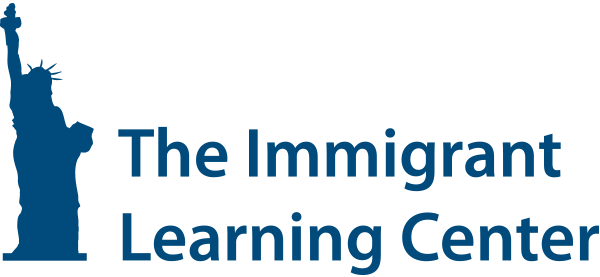by Alex, 11th Grade
First Place Winner of The ILC 2025 Teen Perspectives Contest
The first Lunar New Year I spent in Miami didn’t feel like a celebration at all. Back when I was in Hong Kong, the streets would glow with the saturated red of lanterns and Festive banners. The air would carry the smell of festive foods, and the city would pulse with excitement. Family gatherings, exchanging red pockets filled with money that symbolize wealth and luck, snapping firecrackers—the celebration was too prominent for anyone to ignore, as the entire city moved concertedly to welcome the new year.
“Año nuevo lunar, ¿qué es eso?”
Lunar New Year did not exist in my neighborhood. That was the response when I tried to tell someone that it was the Lunar New Year. On the day of, the sky was dull and gray, as if even it had forgotten what the day carried. In school, the hallways were filled with the usual noise of students hurrying to class, oblivious to the weight the day carried for me. There were no red banners, no well-wishes—just another ordinary day.
I was lonely at school. My classmates spoke Spanish, and their rapid conversations formed a wall I could not break through. At times when I attempt to talk, whether it is about school or the festival, their confused expressions made me want to retreat further into myself. What does it mean to celebrate something when no one around you recognized it? I found myself questioning whether my traditions still mattered if they existed only in my memories.
My mother, having sensed my unusuality, decided to introduce our culture into the new home. Despite her limited English, not to say Spanish, she knocked on our neighbor’s door with the red banner in hand. She smiled warmly. “Lunar New Year,” she said. She gestured towards the decorations and pressed on. “Good Luck. Happy New Year,” she attempted. Seeing that there was confusion, she mimed hanging the banner and pointed at the sky. “Lucky,” she repeated. “Ah, suerte! Lucky! For new year?” Mrs. Cruz replied with Spanish-infused English that she had moved from Mexico not long ago. My mother beamed, nodding vigorously.
The following morning, I woke up to see Mrs. Cruz’s front porch getting fluttered with the red banners. A victory! Soon, word spread, and more and more people approached us with curiosity regarding the decorations. We spent time explaining the tradition: the symbolism of red for prosperity, the giving of red envelopes, and the importance of family gatherings, all of which highlighted the significance of the tradition. Many neighbors joined in, dying their houses red with the banners. They also shared their own traditions with us—how their families celebrated Día de los Muertos or Three Kings’ Day—and we recognized many commonities within our shared reverence for ancestors, family, and prosperity.
It was the beginning of something greater. By the following year, Red banners were hung on more homes. Some neighbors even learned to say “Gong Hei Fat Choy” or “Xin Nian Kuai Le.” Mrs. Cruz made tamales and brought them over while my mother prepared dumplings. We blended our traditions and enjoyed the fusion. I no longer felt so isolated. My traditions had found a home in America, not by replacing others, but by existing alongside them.
This experience is the epitome of American society. Immigrants carry rich traditions that shape and enhance the cultural landscape in America. According to statistics from the Pew Research Center, immigrants and their descendants will account for 88% of the U.S. population growth through 2065. This demographic shift will lead to more fusion of customs, languages, and celebrations. Examples include festivals like Diwali, Eid, and the Lunar New Year; these once-niche observances are now celebrated in cities across the country. This mosaic of culture strengthened America and turned it into a place where different backgrounds coexist and enrich one another.
Sharing traditions is not just about preserving cultural identity; it also promotes understanding and unity. A study by the National Immigration Forum found that communities with strong immigrant integration programs tend to experience lower crime rates, higher economic growth, and greater civic engagement. When people share their customs, they break down barriers of misunderstanding and prejudice. Food, music, and celebrations become bridges between cultures, turning strangers into close-knit friends and fostering a sense of belonging.
My experience in Miami taught me that cultural exchange is not just about holding onto the past; it’s about shaping the future. Lunar New Year in my old neighborhood transformed from an unknown tradition into a shared celebration, demonstrating how immigrants do not just assimilate into America—they redefine what it means to be American. This openness to cultural exchange is what makes the country unique. It is why you can find sushi restaurants next to taco stands, hear different languages spoken on a single street, and see people from all backgrounds celebrating holidays that are not their own.
Years later, when I look back on that first Lunar New Year in America, I no longer feel the sting of isolation. Instead, I remember the red banners that stick to the wall with written blessings, a testament to the power of cultural sharing. I remember my mother’s determined smile as she bridged a gap with nothing but kindness and broken English. And I remember how, through something as simple as a holiday, I found my place in a new area—not by abandoning my roots, but by planting them in new soil and watching them grow alongside others.
Works Cited
“National Immigration Forum.” National Immigration Forum, 2014, immigrationforum.org/.
Pew Research Center. “Modern Immigration Wave Brings 59 Million to U.S., Driving Population Growth and Change through 2065.” Pew Research Center, 28 Sept. 2015, www.pewresearch.org/race-and-ethnicity/2015/09/28/modern-immigration-wave-brings-59-million-to-u-s-driving-population-growth-and-change-through-2065/.
